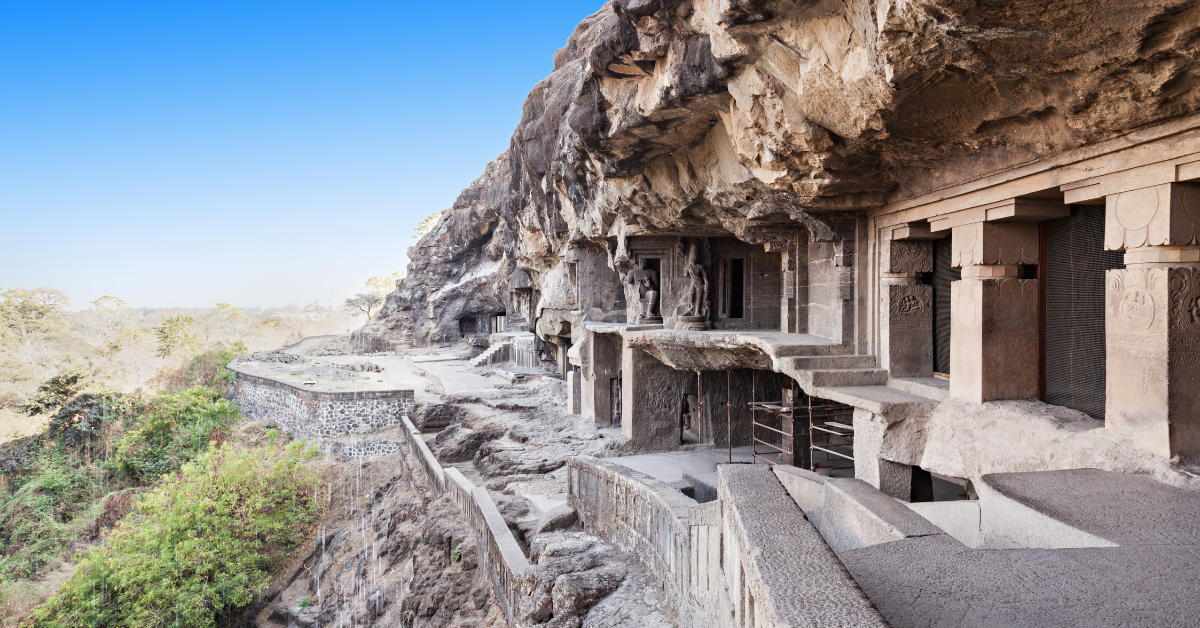The Ajanta Caves, located in western India, are a treasure trove of Buddhist art carved between the 2nd century BCE and 5th century CE. Japanese travelers often express profound emotions when standing before the murals, sculptures, and the overwhelming silence that fills the caves.
What are the Ajanta Caves?
The Ajanta Caves, situated in the state of Maharashtra, consist of over 30 cave temples carved into a gorge. These caves served as monasteries and prayer halls, with walls decorated with murals and sculptures that illustrate Buddhist teachings. Especially famous are the depictions of the Buddha’s life and the Jataka tales (stories of his previous lives). Many Japanese visitors note that these artworks evoke connections to Buddhist art in Nara and Kyoto.
One of the most common remarks is the “vivid colors emerging from the darkness.” The deep reds and blues that appear as one enters the cave remain striking even after nearly 2,000 years. Their preservation demonstrates the extraordinary level of ancient Indian artistry.
Impressions of Japanese Travelers
Japanese visitors are often struck by the “coexistence of silence and grandeur.” Although the caves are a popular tourist destination, the interior atmosphere feels solemn, as if time itself has stopped.
One traveler remarked, “It feels like a fusion of the quietness of Japanese temples and the strength of India.” The lines and colors of the murals recall elements of Japanese Buddhist art, inspiring thoughts of cultural exchange and influence.
Table: Japanese Travelers’ Impressions
| Impression | Description |
|---|---|
| Silence | The cool air inside the caves brings calmness |
| Grandeur | Large statues and ceiling paintings overwhelm the viewer |
| Familiarity | Reminds them of temples in Nara and Kyoto |
| Exotic atmosphere | Unique decorations and colors feel refreshing |
Comparison with Japanese Culture
Compared with Japanese Buddhist art, the Ajanta Caves emphasize stronger colors and three-dimensional sculptures. In Japan, wood and plaster are used to create calm expressions, while in India, entire cliffs are carved, producing a monumental effect.
Table: Comparison between Japanese and Indian Buddhist Art
| Aspect | Japan | Ajanta Caves |
|---|---|---|
| Material | Wood and plaster | Excavated rock |
| Colors | Soft tones | Bright reds and blues |
| Expression | Simple and static | Dynamic and powerful |
| Atmosphere | Quiet and spiritual | Magnificent and grand |
Despite these differences, both share the common purpose of conveying Buddhist spirituality.
Environment and Atmosphere Experienced by Visitors
The Ajanta Caves are located in a lush gorge, where nature itself feels integrated into the temples. On the way, visitors see waterfalls and streams, adding to the harmony between history and nature. Many Japanese travelers express a sense of “comfort as if embraced by nature.”
Table: Points That Impressed Japanese Travelers
| Aspect | Impressions |
|---|---|
| Scenery | Temples blend seamlessly with nature |
| Sound | The river and wind create soothing sounds |
| Air | The cool cave atmosphere is memorable |
| Feeling | Feels like stepping into another world |
Advice for Foreign Travelers
Foreign visitors can benefit from Japanese travelers’ experiences. For instance, many Japanese note that “the caves are dimly lit, so bring a flashlight.” Since the visit involves long walks, comfortable shoes are recommended.
Table: Travel Tips Shared by Japanese Visitors
| Point | Advice |
|---|---|
| Clothing | Wear light clothes and comfortable shoes |
| Essentials | Bring a flashlight and drinking water |
| Best time | Visit in the early morning to avoid crowds |
| Mindset | Respect the silence and observe calmly |
Conclusion
The Ajanta Caves are a place that offers Japanese visitors both spiritual inspiration and a rich cross-cultural experience. The magnificent murals and sculptures convey Buddhist spirituality while showcasing the richness of Indian art. At the same time, they prompt reflection on similarities and differences with Japanese culture.
Visitors gain not only historical knowledge but also peace of mind in a space harmonized with nature. By understanding Japanese impressions, foreign travelers can also appreciate the deeper layers of the Ajanta Caves’ appeal.






